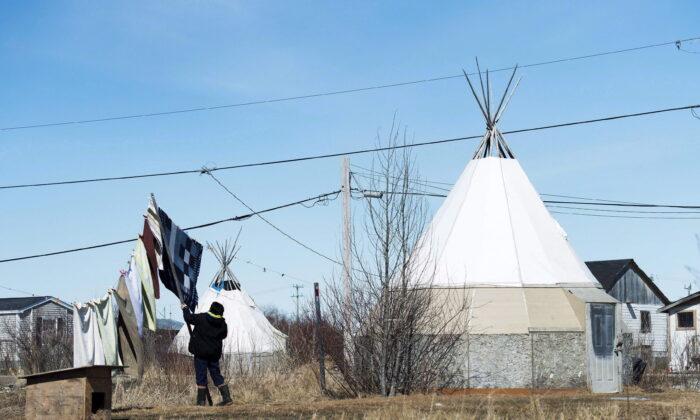Politicians have a trick of responding to questions on how they are addressing a public policy challenge by listing off the dollar amounts they have “invested.” Looked at closely, this is not answering the question that was asked, but engaging in obfuscation. Politicians can start by ending their addiction to spending large announcements as if they were, in fact, solving the problem.
For example, telling Canadians how much they are spending on indigenous housing does not tell them how many houses have been built or how many families now have a roof over their heads. Likewise, telling Canadians how much they are spending on water and sewage systems doesn’t tell them how many First Nations now have functional water and sewage treatment facilities.
Canadians should not accept governments that measure program effectiveness by how much they are spending. Rather, Canadians should ensure that their governments measure success on outcomes and improvements.
However, the creating of these two departments in 2017 did not curb spending. In fact, the change only increased spending. Overall spending in the two new departments totalled $23.3 billion last year, and will increase in the future.
Parliamentary Budget Officer Yves Giroux—a non-partisan officer of Parliament—said it best at a recent House of Commons Indigenous Affairs Committee meeting: “Increased spending did not result in a commensurate improvement in the ability of these organizations to achieve the goals they set for themselves.”
He added, “There seems to be an outcome problem.”
Talk about an understatement of historic proportions. Observers familiar with the track record of the Indigenous Affairs bureaucracy know this is hardly new.
In 2018, the Frontier Centre for Public Policy published a policy paper that carefully examined the history and growth in spending of Indigenous and Northern Affairs Canada (INAC). The study astutely observed that the vast bureaucracy had evolved from a much smaller department in the 1960s to a huge federally run “super province bureaucracy” that had acquired jurisdictional reach over at least 90 percent of Canada’s land mass.
The bureaucracy was comparable to provinces and territories because INAC was responsible for a budget that rivalled some of our largest provinces, yet the expenditures were accountable only to the federal government and not to taxpayers or even Canada’s Indigenous citizens.
What did the 2018 study find?
The author wrote: “The same issues of grinding poverty, powerlessness and the resultant social pathologies plaguing so many Indigenous communities that Indigenous Affairs was attempting to address in 1966–67—with a budget of $131.7M—are the exact same issues Indigenous Affairs is still failing to address 50 years later—with an annual budget of about $19.1B and growing.”
It is almost as if increased funding did not provide solutions but made the problems worse.
Like clockwork, opposition politicians and even some department bureaucrats had been warning that the ballooning spending was not helping.
A special report to the then-Indian Affairs minister in 1979, over 40 years ago, warned: “Indian people have lost control over their lives. They have lost their traditional capacities for healing, caring, learning and providing food and shelter. Instead, increasingly large numbers of Indian people are heavily dependent on welfare; large numbers of children are neglected and relegated to the care of Children’s Aid Societies; and large numbers of adults are dependent on alcohol. … The tragedy is that there is no evidence of improvement in this intolerable condition in spite of increasing government expenditures.”
Sound familiar?
The tragic status quo is intolerable and, to a great number of Canadians, immoral. Governments need to keep spending in check and they need to ensure that programs are helping people. No government can claim to be for “Indigenous reconciliation” given this ongoing, seemingly intractable, situation.
In 2016, First Nation author and businessman Calvin Helin warned in his bestselling book “Dances with Dependency” of a coming “demographic tsunami” where program spending on indigenous programs was increasing due to burgeoning indigenous populations at the same time as more boomer taxpayers were retiring from the workforce. This demographic shift has increased pressure on health care and social spending will come at a time when fewer Canadians are paying taxes. So, we will see increased spending needs with less revenue for governments to meet the demands.
Thus, there is an even a more compelling imperative for the feds to finally address ballooning spending by the huge “Indigenous Affairs” bureaucracy. Eventually, these upward pressures will increasingly affect taxpayers while not helping indigenous people.
Ottawa can commit to a few key steps to resolve the problem.
The first is to commit to a full audit of the outcome of the spending in every indigenous community in the country. Wasteful spending, of course, needs to be stopped.
Second, Ottawa needs to fund only those programs that are required by law and especially those that are required by the constitution. The bureaucracy can begin to phase out billions of dollars in discretionary spending that cost billions without showing improvements in the lives of indigenous people.
Third, the feds must commit to jump-starting indigenous economies so that dependency on social program spending is reduced to their own economic activities. This means Ottawa must ensure First Nations have access to, and support, resource projects and industries providing jobs for their people. This would mean Ottawa must quickly abandon its so-called “Just Transition” policies of keeping resources in the ground. That is a non-starter for most indigenous communities.
Fourth, and most painfully, the federal government must, at least, begin negotiations with bands about dismantling the bureaucracy and giving required service and program delivery over to First Nations themselves.
Of course, when this happens, First Nations need to ensure that they have good governance policies in place to ensure that the money is spent appropriately. When services are appropriately given by communities, federal bureaucracies can be phased out while maintaining an accountability system that ensures that taxpayers’ money is being used to solve real problems.
Finally, where possible, Indigenous Affairs needs to listen to Indigenous advocates—such as the late NDP MLA Jean Allard, a Metis from Manitoba—who have long argued for increased funding of band programs and services directly to individuals, bypassing wasteful federal and indigenous bureaucracies. In other words, the allocations would go to individual indigenous people, and band councils would tax back the resources they need to manage the communities.
Politicians and policymakers, both federal and indigenous, have a historic opportunity to finally address this decades-long program stalemate. Of course, this won’t be easy, but it is essential for the future of indigenous communities. It is essential for Canada too.





